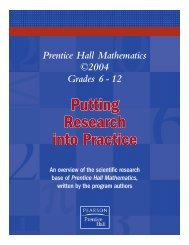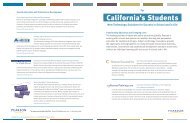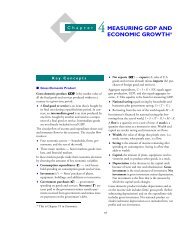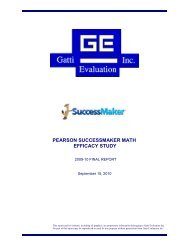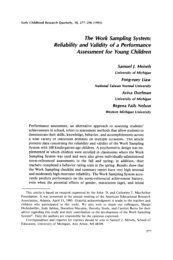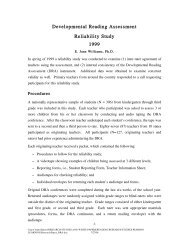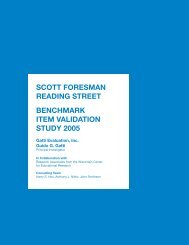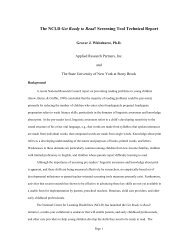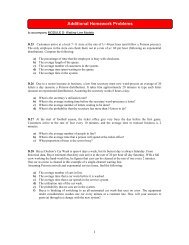Language Arts: Grammar and Punctuation Basics ... - Pearson
Language Arts: Grammar and Punctuation Basics ... - Pearson
Language Arts: Grammar and Punctuation Basics ... - Pearson
Create successful ePaper yourself
Turn your PDF publications into a flip-book with our unique Google optimized e-Paper software.
■A plural subject (more than one person or thing) is used with a plural verb.For example:Her habits annoy me. (plural)The planes were late. (plural)Writers sometimes make mistakes in subject-verb agreement in sentences with more than one subject—a compound subject—orwith verbs separated from subjects. It’s also common for writers to confuse subject-verb agreement when usingpronouns (I, you, he, she, it, we, you, <strong>and</strong> then), either/or, neither/nor connectors, or “there” sentences. Examples of thesefollow in this topic.Compound SubjectsSubjects joined by <strong>and</strong> are typically paired with a plural verb. These are called compound subjects. The only exception tothis rule would be subjects considered singular because they are they are taken as a single unit, such as Rock ‘n’ Roll.For example:John <strong>and</strong> Tina are very close. (plural)Corned beef <strong>and</strong> cabbage is my favorite meal. (singular)Hot cocoa <strong>and</strong> a good book make S<strong>and</strong>ra happy. (plural)Hide-<strong>and</strong>-seek is played by almost all children. (singular)Verbs Separated from SubjectsWhen words, such as prepositional phrases, come between the subject <strong>and</strong> verb, the interrupting words do not changesubject-verb agreement. The verb still must agree with the subject of the sentence.The coins on the table are mine. (plural )The price of the dining room chairs is ridiculous. (singular)That woman with plaid bell bottoms seems strange. (singular)Those shirts, as well as that coat,need a thorough cleaning. (plural)<strong>Punctuation</strong>CommasWriters use commas to mark slight pauses or breaks in sentences. When used properly, commas clarify meaning in a sentence.When overused, however, commas can interrupt the smooth flow of sentences <strong>and</strong> cause confusion. Whenever youadd a comma to a sentence, you should be conscious of the specific comma usage rule you are applying. All good writersshould know the six primary comma rules covered in this topic.1. Use a comma after an introductory word or word group that leads into the main sentence.■ Strolling down the nature trail, Zac saw a brown bear.■ When you have finished eating your broccoli, you may leave the table.A dependent clause that comes at the beginning of a sentence always needs to be followed by a comma. The second exampleabove illustrates this concept. However, if the dependent clause comes at the end of the sentence, no comma is necessary:■You may leave the table when you have finished eating your broccoli.



